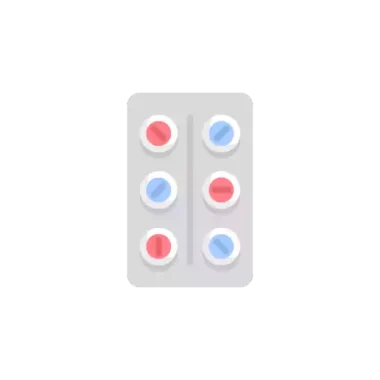Composition Azithromycin (200mg/5ml)
Rx Prescription Required
Pack bottle of 15 ml Oral Suspension
Storage Store below 30°C
Chemical Class Macrolides
Action Class Macrolides
Habbit Forming
Manufacturer Sun Pharmaceutical Industries Ltd
Manufacturer address 90, Delhi – Jaipur Road, Sector 32, Gurugram, Haryana 122001

Azax 200 Suspension
Azax 200 Suspension is an antibiotic medication. It is commonly given to children for the treatment of a wide range of bacterial infections targeting the ear, eyes, nose, throat, lungs, skin, and gastrointestinal tract.
Basic Info
Description
Azax 200 Suspension works by inhibiting the growth of the infection-causing bacteria and stopping it from multiplying. As a result of this, the spread of the infection is disabled. Azax 200 Suspension is usually given once a day, preferably in the morning. However, in the case of typhoid, it is to be given twice. Give it with or without food at about the same time each day. However, it is best given with food since children often have a sensitive stomach and could easily get a stomach upset.
Medicine dose depends on the type of infection your child has, its severity, and your child’s age and body weight. So stick to the dose, time, and way prescribed by the doctor. In case your child vomits within 30 minutes of taking this medicine, give the same dose again.
Your child may start to feel better within 2 days of regular dosing. However, you must still complete the full prescribed course of the medicine and never stop it abruptly as that may worsen your child’s condition or increase the risk of reinfection. Some of the minor and temporary side effects of this medicine include vomiting, diarrhea, nausea, and stomach pain. Usually, these episodes subside once your child’s body adapts to the medicine. However, in case these effects persist or become bothersome for your child, consult your child’s doctor without any delay.
Inform your child’s doctor about any previous episode of any allergy, heart problem, liver impairment, and kidney malfunction. Knowing the child’s medical history is critical for dose alterations and for planning your child’s overall treatment.
Uses
Treatment of Bacterial infections
How To Use
Information not available at the moment. Please check back later.
MOA
Azax 200 Suspension is an antibiotic. It works by interfering with the synthesis of essential proteins required by bacteria to perform important functions. By doing so, it stops the infection-causing bacteria from growing further and prevents the infection from spreading.
What If
Do not panic. Unless your child’s doctor has advised a specific regime for your child, you can give the missed dose as soon as you remember, but at least 12 hours before the next dose is due.
Drug Tips
Your child must complete the entire course of this medicine. Stopping too soon may cause the bacteria to multiply again, become resistant, or cause another infection.
Give Azax 200 Suspension with food to avoid an upset stomach.
Encourage your child to drink plenty of water in case diarrhea develops as a side effect.
Azax 200 Suspension will not be effective for viral infections. However, the doctor may prescribe this medicine in case of a secondary bacterial infection. So make sure to speak to your child’s doctor first.
Only give Azax 200 Suspension to your child for their current infection. Never save medicine for future illnesses.
Stop the medicine and contact the doctor immediately if your child develops an itchy rash, facial swelling, and breathing difficulties soon after the intake.
Faqs
Q. What if I give too much of Azax 200 Suspension by mistake?
Azax 200 Suspension is unlikely to cause any harm if an extra dose is given by mistake. However, if you think you have given too much of Azax 200 Suspension to your child, immediately speak to a doctor. Overdose may cause unwanted side effects and may even worsen your child’s condition.
Q. Are there any possible serious side effects of Azax 200 Suspension?
Some serious side effects of this medicine include persistent vomiting, kidney damage, allergy, diarrhea, and severe gastrointestinal infections. Always consult your child’s doctor for help in such a situation.
Q. Can other medicines be given at the same time as Azax 200 Suspension?
Azax 200 Suspension can sometimes interact with other medicines or substances. Tell your doctor about any other medicines your child is taking before starting Azax 200 Suspension. Also, check with your child’s doctor before giving any medicine to your child.
Q. Can I get my child vaccinated while on treatment with Azax 200 Suspension?
Antibiotics usually do not interfere with the ingredients in vaccines or cause a bad reaction in a child who has just been vaccinated. However, children taking antibiotics should not get vaccinated until they recover from the illness. As soon as your child feels better, the vaccine can be given.
Q. Which all lab tests should my child undergo while taking Azax 200 Suspension on a long term basis?
The doctor may prescribe getting kidney function tests and liver function tests periodically to keep a check on your child’s condition.
Q. Can Azax 200 Suspension impact my child’s digestion?
Children often have a sensitive stomach and develop a stomach upset while taking medicines. When antibiotics are given, the good bacteria in their gastrointestinal tract may too get affected. Azax 200 Suspension may kill off good bacteria along with the bad ones, increasing your child’s risk of developing other infections. So, in case your child is having diarrhea while on Azax 200 Suspension, do not stop the medicine course. Instead, call your child’s doctor to ask the next steps. In some cases, the doctor may alter the dose.
Q. Why is Azax 200 Suspension given for 3 days?
The duration of treatment depends on the type of infection being treated and the age of the patient. Azax 200 Suspension is not necessarily given for 3 days. In most bacterial infections, a single dose of 500 mg is given for 3 days. Alternatively, it can be given as 500 mg once on day 1 and then 250 mg once from day 2 to day 5. In some cases of infection such as genital ulcer disease, it is given as a single 1 gram dose. Therefore, you must stick to the regime advised by your doctor.
Q. What should I avoid while taking Azax 200 Suspension?
Generally, it is recommended that patients taking Azax 200 Suspension should avoid taking any antacid with this medicine as this can affect the overall effectiveness of Azax 200 Suspension. It is also recommended to avoid exposure to sunlight or tanning beds as Azax 200 Suspension increases the risk of sunburn.
Q. Is Azax 200 Suspension a strong antibiotic?
Azax 200 Suspension is an effective antibiotic that is used for the treatment of many bacterial infections. Compared to other antibiotics, Azax 200 Suspension has a longer half-life which means that it stays in the body for a long time because of which it is given once a day and for a short span of time. Other antibiotics comparatively have a shorter half-life and are usually given twice, thrice, or four times a day.
Q. Can you get a yeast infection from taking Azax 200 Suspension?
Some people may get a fungal or yeast infection known as thrush after taking Azax 200 Suspension. Antibiotics such as Azax 200 Suspension can kill the normal or ‘good bacteria’ of your intestine responsible for preventing thrush. You should inform your doctor if you get a sore or vaginal itching or discharge. Also, inform your doctor if you get a white patch in the mouth or tongue after taking Azax 200 Suspension or soon after stopping it.
Benifits
In Treatment of Bacterial infections
Azax 200 Suspension is an antibiotic medicine that can be used to treat many different infections caused by bacteria. These include infections of the blood, brain, lungs, bones, joints, urinary tract, stomach, and intestines. It can also be used to treat sexually transmitted diseases. It stops the growth of the bacteria causing the infection and clears the infection. Take it for as long as prescribed by the doctor and avoid skipping doses. This will make sure that all bacteria are killed and they do not become resistant.
Side Effects
Azax 200 Suspension does not pose serious side effects and is well-tolerated by children. In case the side effects do occur, they’re likely to subside once the body adapts to the medicine. Consult your child’s doctor if these side effects persist or bother your child. The most common side effects include-
Diarrhea
Abdominal pain
Nausea
Vomiting
Safety Profile
Kidney:CAUTION
Azax 200 Suspension should be used with caution in patients with severe kidney disease. Dose adjustment of Azax 200 Suspension may be needed. Please consult your doctor.However, Azax 200 Suspension is usually considered safe to use in children with mild to moderate kidney impairment. Dose modifications are generally not required in children with kidney problems.
Liver:CAUTION
Azax 200 Suspension should be used with caution in patients with liver disease. Dose adjustment of Azax 200 Suspension may be needed. Please consult your doctor.However, discontinue immediately if signs or symptoms of hepatitis like vomiting, paleness, and weakness are observed.
Refferences
Chambers HF, Deck DH. Tetracyclines, Macrolides, Clindamycin, Chloramphenicol, Streptogramins, & Oxazolidiones. In: Katzung BG, Masters SB, Trevor AJ, editors. Basic and Clinical Pharmacology. 11th ed. New Delhi, India: Tata McGraw Hill Education Private Limited; 2009. p. 801.
Medline Plus. Azithromycin. view
Royal College of Paediatrics and Child Health. Medicines for Children – information for parents and carers. view
Medicines for Children . Azithromycin for bacterial infections. view
Children’s Health Queensland Hospital and Health Service. Emergency care of children: Medication guides for use in Queensland. view
Azithromycin monohydrate . Surrey, UK: Sandoz Limited; 2007 . view
Healio. The role of azithromycin in pediatrics. . view
Höffler D, Koeppe P, Paeske B. Pharmacokinetics of azithromycin in normal and impaired renal function. Infection. 1995;23:356-361. view
Ma TK, Chow KM, Choy AS, et al. Clinical manifestation of macrolide antibiotic toxicity in CKD and dialysis patients. Clin Kidney J. 2014;7:507-512. view






